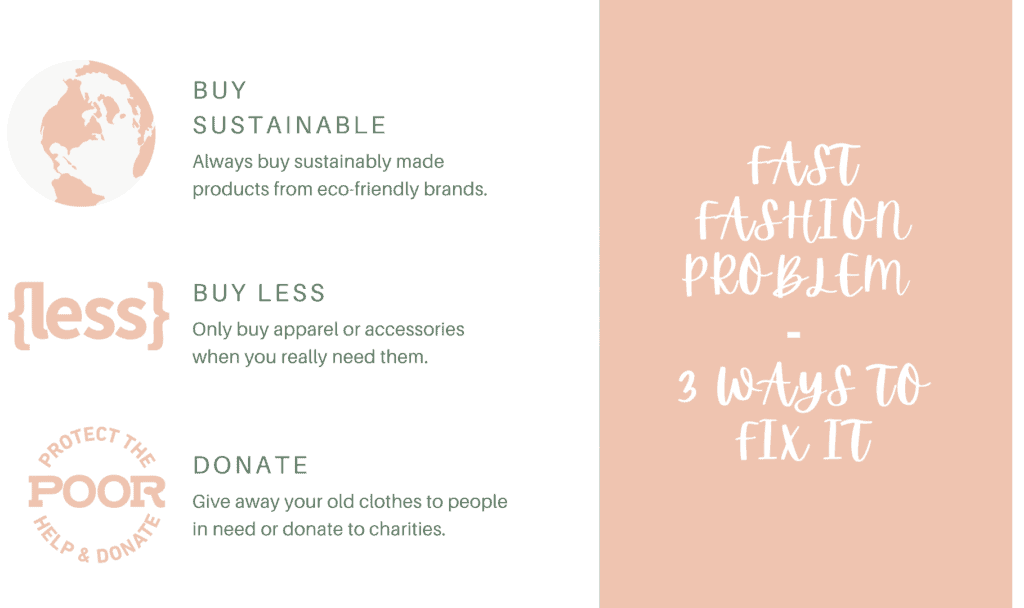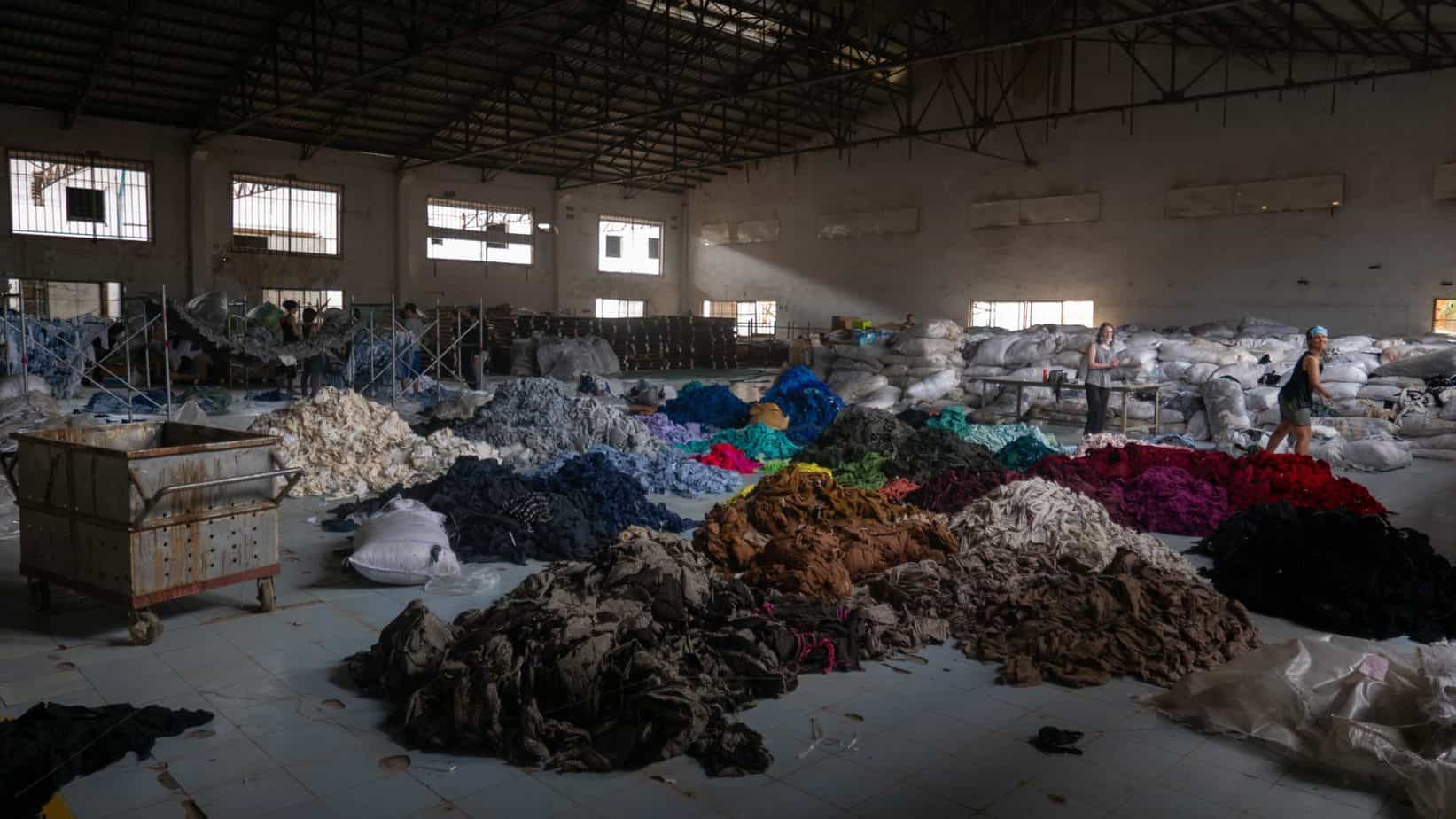What comes to your mind first when you hear about fast fashion? While we don’t know what exactly it is, but we can say for sure that it must have something to do with the environmental impact.
If you—in recent times—visited a fashion outlet and got your favorite T-shirt or denim with the ‘absolute bargain’, odds are what you experienced is fast fashion. Yes, we’re talking about a serious issue here. It is fast fashion that is killing our planet slowly but surely, and what’s disheartening is that in spite of knowing it, we’re not doing anything about it.
Do you know that fashion—being a billion-dollar industry—is responsible for being the most contaminating industry after the oil sector?
While the term includes ‘fast’ in it, what it does is exactly the opposite. It slows down the progress of the country where it is practiced—from putting a negative impact on nature to killing workers’ values to putting people’s lives at risk to contributing to resource waste.
What is Fast Fashion?
First things first—let’s first get our head around what exactly fast fashion is.
As per the Oxford dictionary, fast fashion means:
“Inexpensive clothing produced rapidly by mass-market retailers in response to the latest trends.”
Based on the definition, we can clearly see that fast fashion is about creating, producing, or manufacturing up-to-the-minute, inexpensive, and chemical-based clothing in bulk.
It is so huge that the more facts we present in front of you, the less they seem. The internet is full of articles about the statistics (facts) of fast fashion, describing how it is killing our ethics and the planet we’re living in. Not just the producers and retailers are responsible for this catastrophic situation, we’re also associated with it—directly or indirectly.
If you ever purchased clothing from GAP or H&M, you contributed to the environmental impact. In fact, any clothing that is not labeled with words like ‘Sustainable’, ‘Eco-friendly’, or ‘Ethical’ is responsible for the carbon footprint that is impacting our mother earth.
Fast Fashion Problem—How to Fix It Ethically?
Is there any way to put an end to this destructive situation everyone is struggling with, in this modern era?
Well, in spite of being a huge problem, there are ways to fix it, provided that we do it all together.
So, what needs to be done about it?
Here’s how we can fight the problems that exist in the fashion industry:

1. Buy Sustainable
If you seek the best-on-earth way to diminish the impact of global warming we’re going through, buying products that are made with ‘Sustainability’ in mind will definitely be a lifesaver.
Hundreds of eco-friendly brands are now stepping into the sustainable fashion world and producing high-quality clothes for people who care for the planet. If you’re someone who strives for clothes that are made using vegan fabrics, you’re lucky because we’ve got you covered.
In our blog segment, we’ve vetted top earth-friendly brands that make well-favored, biodegradable, long-lasting, and voguish clothes. Additionally, if you can’t help but crave more versatility, you could get your hands on other products, such as:
Not just that, you could make an intelligent decision by being aware of sustainable fabrics.
By and large, eco-friendly brands keep everything transparent to offer customers the peace of mind they’re looking for. That way, the end-user can track everything step by step—from where they take the material to how they process it to how much water is used and how much carbon emission have been avoided in the making of a single production, such as leggings, t-shirts, shoes, and other clothing, for example.
Is there all there is to sustainable fashion?
Not really! There is more to sustainable fashion that meets the eye—there are other benefits of going with sustainably made products.
Most brands that have embraced sustainability also make sure that their workers receive the appreciation they deserve. To ensure this, they visit their ethical factories and sit down with the employees to understand their needs and problems.
If you’re serious about sustainability and want to dig deep, pay close attention to the fabrics being used in the apparel. You should be asking yourself: is this activewear made of organic fabrics?
While people may prefer organic cotton to non-organic one, there is a lot to consider when it comes to textiles. If you’re not after cotton, you will find cotton alternatives useful.
Buying sustainable outfits doesn’t mean you should compromise on quality or other properties that you would get in a good fabric. If you look for silky and shiny clothing, you’re good to go with the organic linen fabric to achieve that.
If you truly care for the planet and have been an active participator in activities about sustainably, you might’ve heard about the ‘Rana Plaza’ collapse, a tragedy where more than 1 thousand people—1,134, to be exact—died and around 2,500 people went through non-fatal injuries. The building only took 90 seconds to collapse.
Who do you think is responsible for this disaster?
Yes, you guessed it right—it is fast fashion alone.
And, all of this could have been avoided if they had used the slow-fashion approach.
2. Shop Less
Make love, not CO2.
Also, shop less!
No matter if you shop online or you love to hit the fashion outlet by car, or on foot, shopping less could be another big step towards dealing with the fast fashion problems.
Don’t buy something unless, of course, you really need it. While shopping for something, just think about nature. You could take the longevity of your clothing to the next level by washing it only when required—when you think is the right time. If you wash your clothes only once in a while, not only will you help decrease global warming but also your outfits will last longer.
It’s no secret that people are now trying to educate themselves towards sustainability. However, it is sad to know that 95% of people who wish to buy sustainable stuff don’t even know what to look for in a sustainable product.
We’ve already discussed how huge fast fashion is. If we don’t do something about it right away, there’ll be no fresh air left to breathe in the future. We need to do our bit to help keep the environment as fresh as possible i.e. to smash the greenhouse effect.
If you by mistake made a hole in your clothing, don’t throw it away; rather you could do some sewing and help reduce waste. That’s because clothing that gets dumped into the water not only puts our life at risk but also impacts the water creatures and land-living mammals.
To make certain that you won’t need to dump your old clothing or fashion accessories, always look for apparel made of recycled fabric, such as recycled cotton, recycled polyester, etc. See our take on sustainable fabrics and make an intelligent decision.
By shopping less, you’re directly reducing the overall carbon footprint, alias CO2, which will pay you off in the long term. As for the recycled fabrics, look for the brands that use utilize a “closed-loop system” so the clothing can be recycled.
Also, buy your much-loved clothing from brands that feature transparency—brands that never keep their customers in the dark. Also, pay close attention to the ethical practices used by the company you’re interested in buying the product of.
3. Give Away
You don’t have to be religious to donate your old clothes to someone in need. Gifting your old clothing to your nephew, cousin, friend, or someone you love to spend time with a lot is another cool yet surprising way to diminish the impact of carbon footprint to a greater extent.
What you donate doesn’t have to be clothing in general, it could be your shoes you no longer need, your purse, or even day-to-day accessories.
How does it work, precisely?
Picture this: you purchase some fashionable clothes from your favorite denim brand and after a year passes by, you feel like you’re no longer interested in wearing the denim you bought, so, you may either end up dumping it or purchase another pair of jeans online or at the nearest store. The apparel you dump will finally find its way to landfills or the ocean and will be responsible for the CO2 emitted.
However, if you don’t throw it away, you’ll avoid a huge amount of greenhouse effect.
It is okay if you don’t want to donate your clothes to someone, we don’t force you to, however, if you can’t help but shop more often, we suggest you do it when it very necessary to do so.
Is offering clothes to the poor the only thing that works?
Not really? If you’re financially strong, you may also donate some percentage of the money you earn to one of the best climate change charities. We’ve come across the following charities that accept donations from people from different parts of the world:
- Coalition for Rainforest Nations
- A Growing Culture
- NATIFS
- Fashion Revolution
- Earth Justice
- Clean Air Task Force
- Sandbag
Tip: keep track of the different initiatives organized in different parts of the world. See what activists are doing to help keep this planet green and healthier and join them if possible.
Wouldn’t it be satisfactory if—to maintain a balance—companies planted a tree for every product purchased by the customers?
Yes, there are brands that do that and Amour Vert is one of them.
So, next time perhaps you could shop from those sustainable brands that plant a tree for every product sold and take a step towards keeping the air as fresh as possible.
Also, when you donate your invaluable money, make sure the non-profit organization you’re donating to is actually a certified one. Don’t donate the money unless you’re 100% sure that you’re offering your money to the right organization.
Fast Fashion Problems for Workers
The fast fashion that exists in the industry is not only concerning for the consumers, it is way too wicked for the workers as well. Every day, hundreds of thousands of workers have to work in unsafe working conditions so they could get minimum wages. Although for the most part young and underage workers have to struggle through this, in some unethical companies, aged workers may also suffer from fast fashion problems.
Fast Fashion Solution
In short, if you want to diminish the impact of fast fashion, always buy from sustainable brands that we’ve vetted in our blog segment, or you could become a helping hand for the poor or the people in need by donating the money.
If you can’t donate money, donate your clothes. That way, you will not have to cast aside your clothes. And, if you can’t even do that, have them recycled.
If none of this is your cup of tea, you could shop less.
Wrapping Up!
It’s no secret that fast fashion is killing the planet and our ethics. Workers don’t get the appreciation for the work they do at the factories, and they often times have to work more. This serious issue mostly happens in developing countries as opposed to developed ones. This major impacts the women since around 80% of workers in the fashion industry are female.
So, are you ready to shop sustainably?
Think twice about nature before you add your favorite apparel to the cart and then make an informed choice.
Happy sustainable living!



